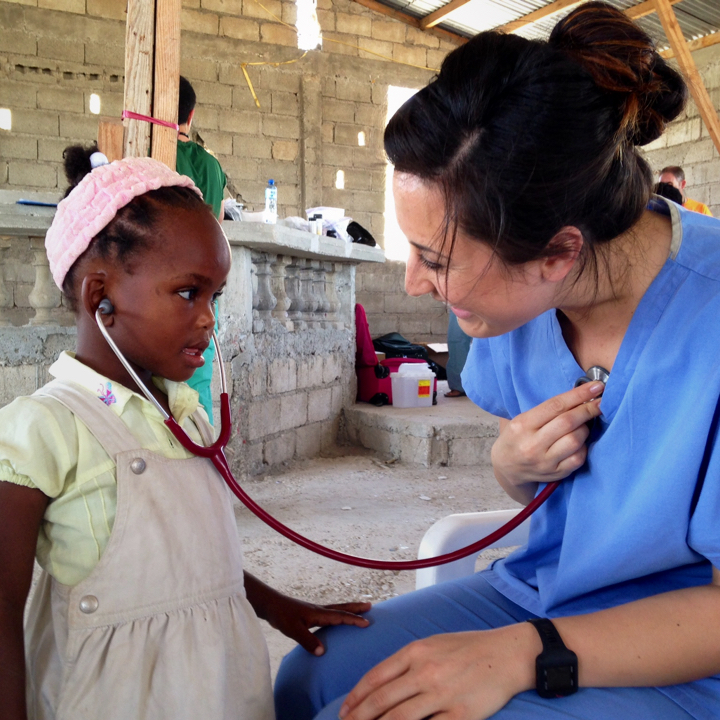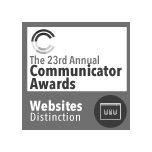


Within the first month of launching its new website with the help of mStoner, Rush University received 2,000 new admissions inquiries.
“In the first week alone, our college admissions reps had too many prospects coming in for staff to get back to them, said Mark Donahue, managing web editor, Rush University. “It’s a good problem to have.”
This good problem was hard won, however. Rush University is a world-renowned destination for a health sciences education with nationally ranked programs and learning experiences within a leading academic medical center. They have the rankings, the distinguished history, and the desirable location on Chicago’s near West Side — but they had a sorely outdated website that didn’t reflect any of this.
An antiquated content management system (CMS) made updating arduous and spawned new pages at an unmanageable rate: mStoner’s initial content audit found over 20,000 assets on the site. The university’s four colleges were all running separate web properties and using workarounds to make simple updates.
Rush University’s Associate Vice President of Marketing and Communications Ryan Nagdeman said, “The university had grown so much and the site infrastructure couldn’t support it. We just crammed more things into every nook and cranny.” They urgently needed a total redesign that would highlight the university’s many selling points and bring all of the units under one umbrella.




Successfully merging Rush’s four health sciences colleges under a new brand and web strategy required widespread trust and buy-in from faculty, staff, and administrators. In partnership with Rush, the mStoner team conducted a comprehensive discovery process with more than 70 stakeholder interviews, student focus groups at each college, and discussions with more than 50 alumni. mStoner used the findings from this research to develop Rush University’s web strategy as well as their branding deliverables: brand pillars, elevator pitches, tone words, and marketing messages tailored to each of their audience groups.
Nagdeman and the mStoner team then sought extensive feedback on the branding, information architecture (IA), and design. “We included people at all levels of the university — the president, the provost, faculty, staff, students, and alumni,” said mStoner chief executive officer Voltaire Santos Miran.
We spent a lot of time building an active engagement with the entire university community.
The team hosted four presentations with individual groups as well as multiple town hall meetings to provide updates and allow people to give input. Nagdeman and the mStoner team also collected over 1,000 responses to a survey, out of a 10,000-person campus community. From the student council to the President’s cabinet, everyone had a say in the end result.
The new site launched in the summer of 2016 with a fresh, functional, and prospect-focused visitor experience.
“We were able to create a site with less than 1,000 pages that serves four colleges and all administration levels and is still remarkably robust,” said Miran.
— Mark Donahue, managing web editor, Rush University
After the launch, Rush University opted to retain mStoner to maintain and support the site, and provide feature enhancements. A benefit of waiting to address the following “nice to have” projects in the post-launch phase is that the team can utilize the new site’s analytics and visitor patterns to inform their strategies.
“This has been one of our best Drupal projects,” said Bill McLaughlin, chief financial and operating officer, mStoner, Inc. “Our implementation made it easy for occasional users to update their pages and it also gave more advanced users a feature-rich toolkit.”
The Rush team and mStoner have a queue of 20 more enhancements that they plan to make. When asked why Rush decided to prioritize this phase and enlist mStoner’s help with it, Donahue said: “We’re in a big city and we have a lot of competition from big players. We must have a site that’s fresh and relevant to keep up — and the functionality has to be there to tell the story of who we are.”
With 2,000 new inquiry form submissions a month, the new site is generating leads at ten times the rate of the old site. Overall traffic is up 4% in a year-over-year comparison. With the improved user experience, visitors are also finding what they need in half the time. In a recent survey, prospective students said the site “has a nice, sharp look to it” and that the site is “definitely in the top 10% of medicine and pediatrics programs.”
While external audiences are significantly more interested in what Rush has to offer, staff and faculty are also more invested in keeping the site up-to-date and engaging. “The site is impacting people who manage the university’s brand,” says Donahue. “They now have a clean, well-functioning website that has allowed them (and us) to reset the rules of the road for marketing and communications. We couldn’t even set a process before because the old site was too broken. Now we are positioned to say, ‘We’ve got a system that works really well and here’s how were going to use it and improve it over time.’ The project has built trust in our team across the university and is helping everyone here project our brand.”
Nagdeman is also proud of the campus community’s enthusiastic reception of the new site. “There’s a pride component: ‘Hey, this is us.’ This is a much better representation of who we are.” From the site training waiting list to faculty showing up for new profile photos to people coming forward with stories to add to the site, the excitement on campus is palpable. “The heavy lifting with stakeholders upfront really works,” Nagdeman says. “It’s not Marketing’s website. It’s our website. People here really believe that. And that’s pretty cool.”


Brand, content and web strategy; brand research; responsive redesign; content development; usability testing; information architecture; Drupal implementation, migration and training; web governance; custom feature development including social media widgets and a faculty finder.
Next case study